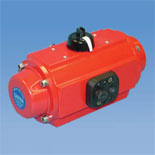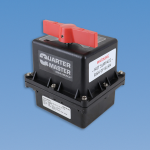Asahi/America’s pneumatic and electric actuators have pushed the state-of-the-art since 1987. Today’s offerings have added numerous features and material choices to accommodate the broadest range of applications. We have been the principle pioneer of corrosion-resistant thermoplastic valves, actuation and pipe in the United States, providing a broad product line, extensive engineering and custom design services. Our pneumatic and electric actuation products have been significantly expanded, dictated by customer needs. We have developed and currently manufacture the industry’s most extensive line of corrosion resistant actuators. This product line consists of pneumatic actuators, electric actuators and a broad range of options and communication packages, which include solenoids for on/off applications, positioning devices for modulating applications, and auxiliary limit switches for position indication (also used for safety interlock). |

Characteristics:
Asahi/America’s Series 79 pneumatic actuators, for quarter turn ball and butterfly valves, provide accurate and dependable control, especially in corrosive applications.
The units are compact, yet extremely durable and available in output torques from 60 to 17,000 inch-pounds based on an 80 PSI air supply. Three standard actuator materials are offered: glass reinforced polyamide, cataphoresis and rilsan coated cast aluminum alloy, and 316 stainless steel; all of which incorporate ISO and NAMUR mounting configurations for simple installation of accessories. These material choices provide excellent protection from adverse environments and corrosive process materials.

Characteristics:An electric actuator is, essentially, a geared motor. The motor can be of various voltages, and is the primary torque-generating component. To prevent heat damage from overwork or excessive current draw, electric actuator motors are usually equipped with a thermal overload sensor embedded in the motor windings. This sensor is wired in series with the power source and opens the circuit if the motor overheats. The circuit closes again when the motor reaches a safe operating temperature. |



